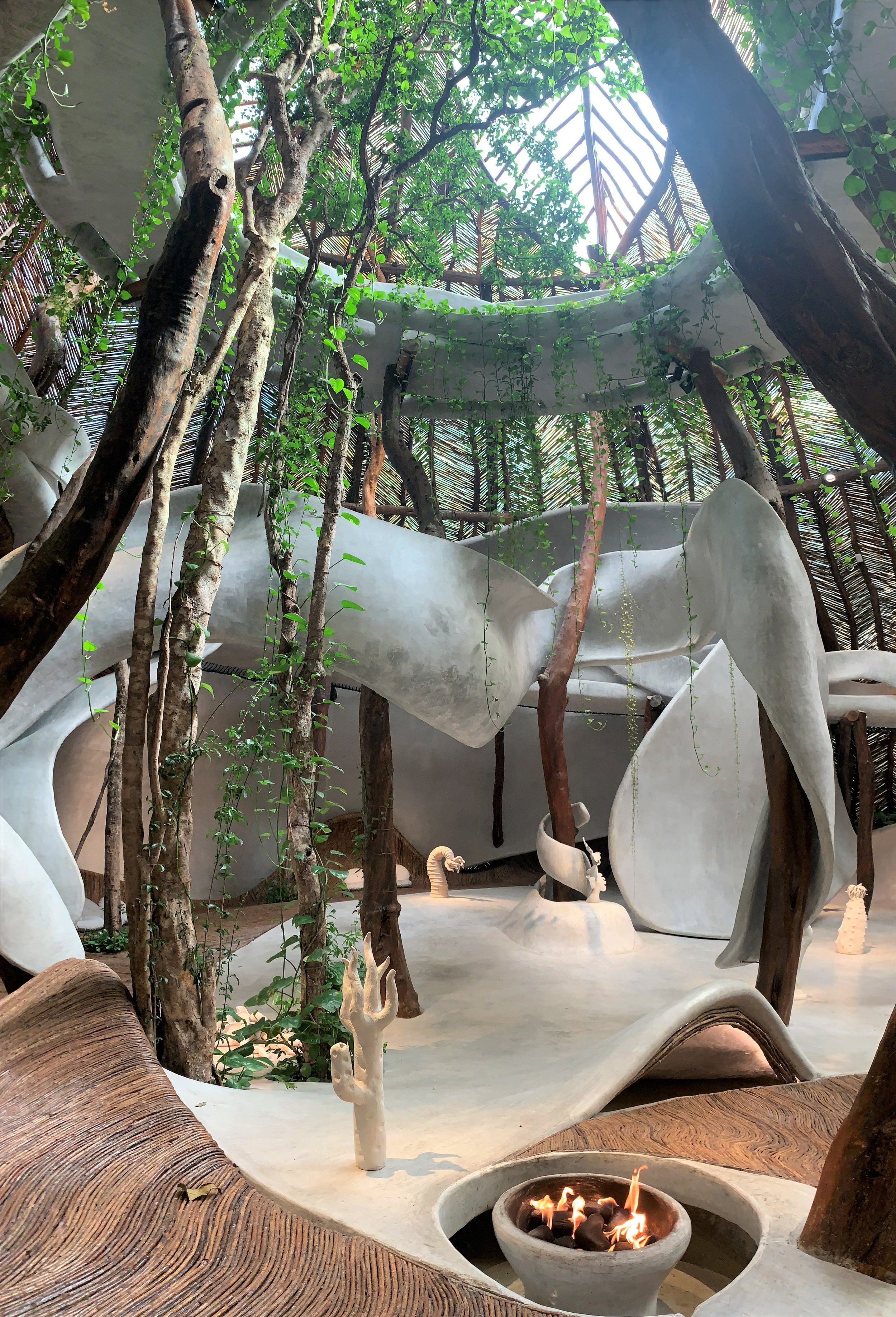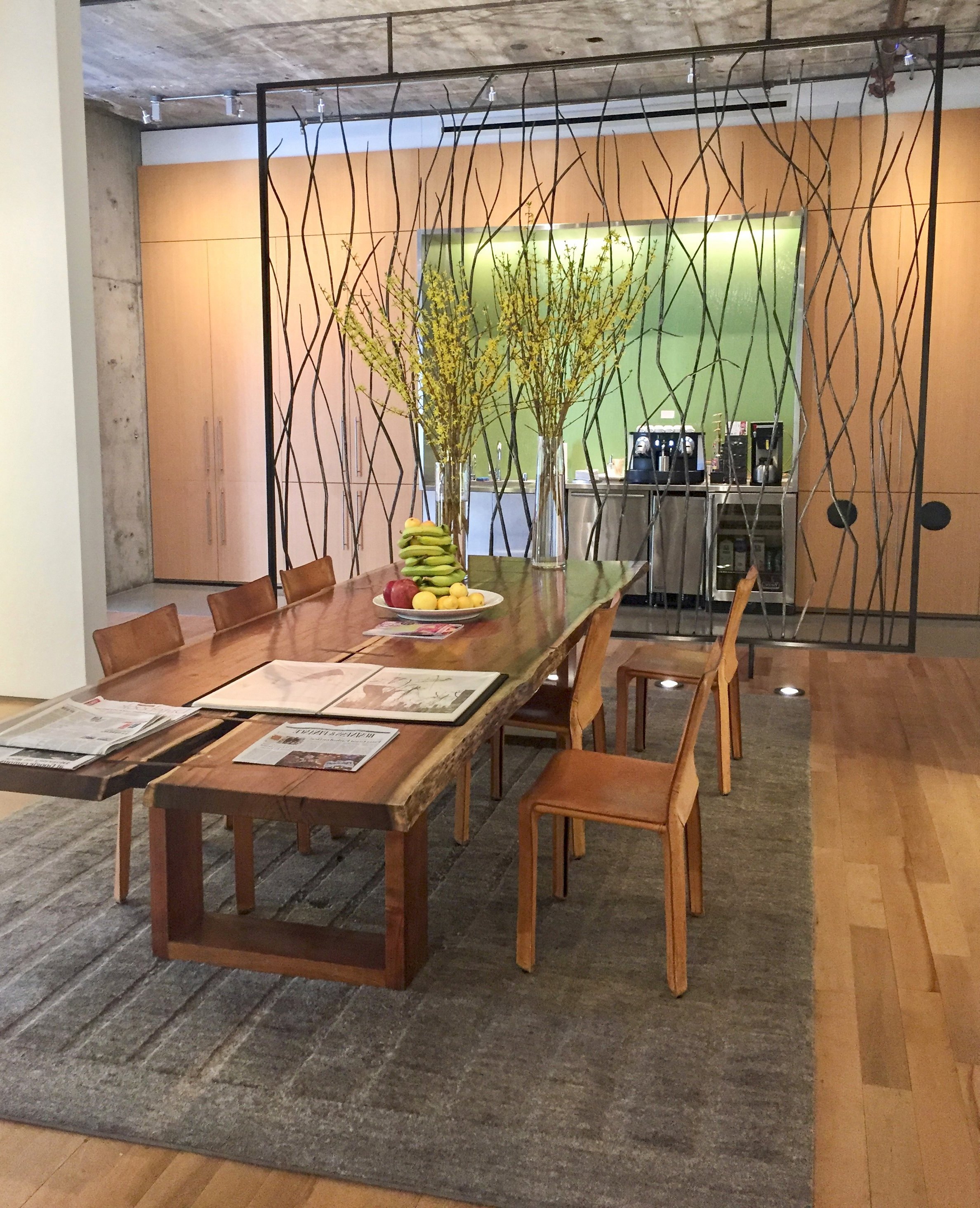Biophilia a Love Story
What is Biophilia and Biophilic Design
SFER IK Museum Tulum Mexico
What is Biophilia
“Close your eyes and imagine your happy place” I am sure many of us have heard this at least a couple of times in our lives when we do yoga or meditation and we immediately find ourselves laying on a grass under a clear blue sky, on a beach while watching deep blue ocean, and many more scenes like these. Biophilia is the reason our happy place is in nature which makes us feel calm, relaxed and focused when we connect with. Bio- means life and philia- means love. Biophilia is love of living organisms and nature. Biophilia is in our DNA because we humans evolved and survived in nature for 2.5 million years before started living in buildings. This means for more than 99 percent of our history as humans, we lived in nature. The first house with a clay roof appeared only 5,000 years ago in China. Because of these Biophilia contributed in improving human physical, emotional and intellectual wellness during the human evolution. Plants, water, light, sound, wind, animals all played an essential part for our well-being.
And biophilic design simply means integrating nature into our built environments in order to create positive emotional experiences, joy, serenity, pleasure and wonder.
Biophilic Design for Well-Being
According to a study by the Environmental Protection Agency, the average American spends 93% of his or her time indoors without any connection with nature. And it is very important that our interiors should be designed to make us feel healthier and happier. Using biophilic design elements in our living and working spaces can create a sanctuary of serenity and improve our health.
Being in nature, view of nature and natural materials in our living and working spaces have been found to reduce stress, lower our blood pressure and heart rates, but it can also enhance our moods, making us feel happier, and more relaxed and focused. Biophilia allows us to connect socially and have positive attitude towards life.
As a human focused approach, biophilic design is not a style or trend, it is rather a design philosophy and it can be applied to any style from contemporary to traditional.
“Biophilic design is about creating good habitat for people as a biological organism in the modern buildings and constructions that advance people’s health, fitness and well-being.”
Dr. Stephen Kellert
The Three Patterns of Biophilic Design
1
Direct experience of nature
•Light
•Air
•Water
•Plants
•Animals
•Natural Landscapes and Ecosystems
•Weather
•Fire
2 Indirect experience of nature
These can be easily applied to our homes
•Images of Nature
•Natural Materials
•Natural Colors
•Simulating Natural Light and Air
•Naturalistic Shapes and Forms
•Evoking Nature
•Information Richness
•Age, Change, and Patina of Time
•Natural Geometries
•Biomimicry
3 Experience of space and place
We can apply some of them to our living spaces
•Prospect and Refuge
•Organized Complexity
•Integration of Parts to Wholes
•Transitional Spaces
•Mobility and Way finding
•Cultural and Ecological Attachment to Place






